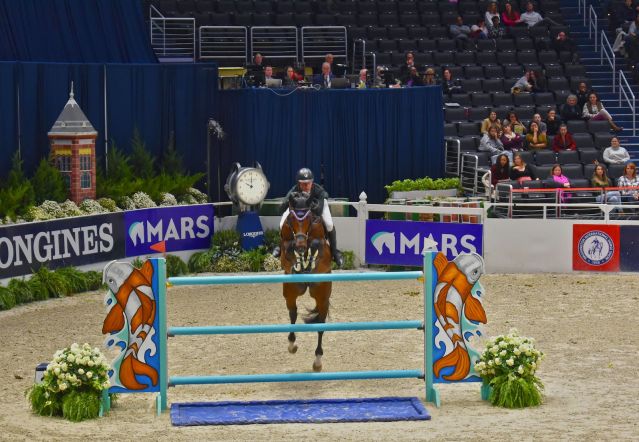Neuroscience
The Neural Dance Between Horse and Rider
Prey and predator brains share neural activation during performance.
Posted March 15, 2023 Reviewed by Devon Frye
Key points
- Horse and rider form a neural dance when they perform together.
- Body language between horse and rider form the basis for neural interaction.
- Adopting an animal's natural form of communication allows for real-time partnership.
- Horses and riders offer the only example of complex neural interaction between prey and predator brains.

To communicate with each other during high-performance moves, horses and riders send and receive signals through body language. Most of these signals are so subtle that viewers cannot see them. To tell our horses what to do, we use tiny touches with our fingers, varying pressures with our legs, an inch or less of difference in our upper body positions, variations in our head turns, a quarter-inch alteration in heel position, and slight openings or closings of the chest and shoulders.
At higher levels of riding, the gradation (sudden vs. gradual) of pressure at each of these body locations also sends important information. We also use multiple vectors of direction—up and down, front and back, left and right, and every point on circles in all of those planes. And these are only a few examples of thousands of aspects of body language that advanced riders use.
Body language works well with horses because it is their natural form of communication with each other. Suppose a mare in a loose herd is approaching her food. She doesn’t need to hurry because she holds a higher rank than the other horses near her. If she places one toe in front of a subordinate, he yields to her. If she swings a shoulder toward him, he moves away with his shoulders. If she swings her hindquarters toward him, he skedaddles very quickly. And so on.
There’s a long history in psychology and neuroscience of studying human-animal communication with indirect and artificial forms of symbolic representation. For example, we often use speech and hand gestures with dogs. Decades of research were built on getting apes to use sign language or physical symbols. Some of these efforts were successful, but none of them allow the animal to use her own natural form of communication.
The primary reason horses and humans communicate at such a high level—and in real-time during very speedy sports—is because we allow the horse to use her own natural form of communication with us. In return, we offer that same form of communication to her. When we apply body language to horses, they reply with similar pressures and movements of their own.
The resulting interaction is a mutual dance between horse and human. This dance is not simply metaphorical. Horses’ peripheral nerves detect human leg pressure, for example, and send those signals to the equine brain. There, they are processed, and a response is formed. Perhaps the horse steps away, yielding to the leg pressure as she has been taught. The horse’s movement, whatever it is, is then sensed by the rider’s peripheral nerves and sent to her brain for processing. Imagine the mutual neural activation between horse and human brains when they perform coordinated maneuvers at high speed for five or ten minutes at a time. It’s a blinding flurry of neural firing, back and forth between the two brains.
This neural dance occurs in real-time, as horse and rider perform together. It is the best example of direct communication between two species. And consider the species: this is interactive communication between a prey brain and a predator's brain. That’s many levels of difference beyond attempts at communication between people and their cats, dogs, or apes—all of whom share predator brains with humans.
References
Clark, V.P., Eschholz, P.A., & Rosa, A.F. (Eds.) (1981). Language: Introductory Readings. New York: St. Martin's Press.
Hauser, M.D. (1996). The Evolution of Communication. Cambridge, MA: The MIT Press.


